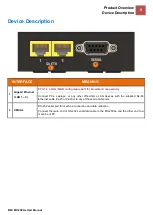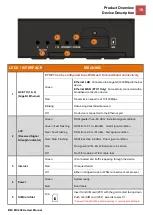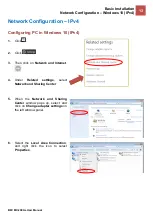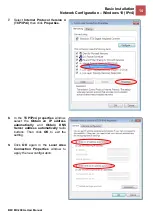
Introduction
1
BEC MX-200Ae User Manual
C
HAPTER
1:
I
NTRODUCTION
Introduction to your Router
The BEC MX-200Ae WWAN Failover Manager is a high performance fixed wireless platform enabling
real-time 4G Cellular data connectivity for your existing serial devices and Ethernet network. The
MX-200Ae provides a reliable and cost-effective alternative solution for business continuity. The
platform can serve as the primary connection or backup connection when wired connections fail are
unavailable or non-existent.
The MX-200Ae features two Gigabit Ethernet interfaces and a RS-232 Serial interface enabling
wireless data connectivity for a broad range of applications and vertical machine-to-machine (M2M)
market segments. Intelligent software supports configurable LAN/WAN options, embedded LTE
module and enterprise level functionality such as: advanced security mechanisms, Quality of Service
(QoS), SPI firewall, auto failover for unparalleled uptime and network redundancy, and cloud-based
management to extend visibility and control of devices remotely.
4G/LTE Mobility
Offer an advanced network solution that meets the growing demands of M2M services, MX-200Ae
exclusively features dual WAN - load balance or auto-failover/failback to provide extraordinary,
always-on internet connectivity.
Ultra-Compact and Lightweight Design
Designed for continuous operation in harsh environments, the MX-200Ae supports an extended
operating temperature range from -4 to 140º F (
–20 to 60º C) and a flexible input voltage range of
9-56V DC making it suitable for diverse environments and applications. To enable simple, reliable, and
efficient integration the ultra-compact, lightweight, and low-profile design incorporates highly flexible
mounting options to ensure that the device and can be easily mounted discretely anywhere.
IPv6 Supported
Internet Protocol version 6 (IPv6) is a version of the Internet Protocol that is designed to succeed IPv4.
IPv6 has a vastly larger address space than IPv4. The router is already supporting IPv6, you can use it
in IPv6 environment no need to change device. The dual-stack protocol implementation in an
operating system is a fundamental IPv4-to-IPv6 transition technology. It implements IPv4 and IPv6
protocol stacks either independently or in a hybrid form. The hybrid form is commonly implemented in
modern operating systems supporting IPv6.
Quick Start Wizard
Support a WEB GUI page to install this device quickly. With this wizard, simple steps will get you
connected to the Internet immediately.





















